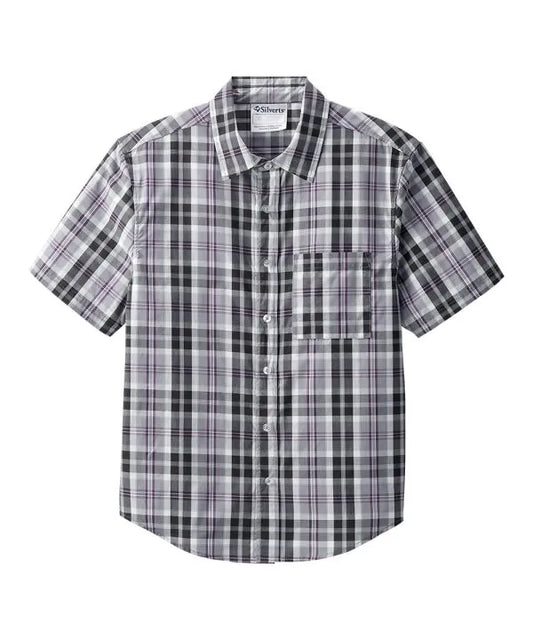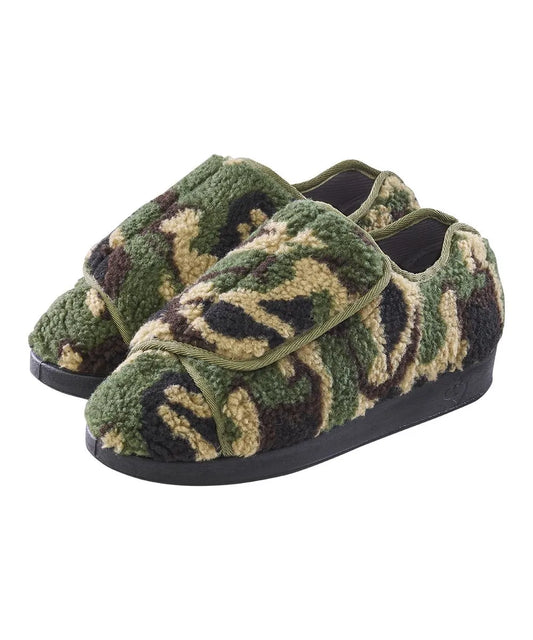Written By: Kate Cruess
Fashion is a way for people to express themselves, a way for them to show who they are. For individuals with limb differences, dressing can be daunting and come with challenges you may never imagine it could come with. Buttons, zippers, narrow pant legs or tight cuffs on sleeves can make the “simple” act of getting dressed feel extremely frustrating. Adaptive clothing for limb differences creates accessible clothing, while also designing clothing that accommodates prosthetic limbs comfortably and still looks stylish. It gives people the opportunity to dress without the frustration, stay comfortable and feel independent while doing it!
Special Considerations For Prosthetic-Friendly Clothing
When choosing prosthetic-friendly clothing, comfort and confidence are key! Traditional clothing often fails to remember that not everybody moves the same way or is the same. When making prosthetic-friendly clothing, the smallest details on the clothing can make a huge difference in the comfort and accessibility of the piece of clothing. This includes fabric choice; fabric that doesn’t irritate or put pressure on certain areas, that is stretchy and comfortable, and that is breathable, as prosthetic sockets can get hot.
Another key consideration is that the clothing allows for easy dressing, undressing and access to the prosthetic limb (Asmari & Zedan, 2024). Long side or front openings with hidden zippers or buttons tend to be popular options (Asmari & Zedan, 2024). This may also mean wider pants or sleeves, length adjustments or adjustable waistbands, as prosthetics can add bulk. This makes clothing easier to put on while also giving accessible access to the prosthetic.
There is also an emotional aspect to prosthetic-friendly clothing (Asmari & Zedan, 2024). It isn’t only about accessibility and comfort; it is also about self-expression. To some people, it’s important that the style of the clothing is similar to what non-prosthetic clothing style is like (Asmari & Zedan, 2024). People with prosthetics may now move easily and express themselves freely thanks to the evolution of prosthetic-friendly apparel, which prioritizes both style and functionality.
Best Pants And Sleeves For Prosthetic Limbs
Finding comfortable pants and sleeves is a crucial factor while dressing with a prosthetic limb. Traditional clothing doesn't always take into consideration the additional bulk that a prosthetic can contribute, which can make pants legs, waistbands, or sleeves unpleasant.. Adaptive clothing with side zippers, adjustable waistbands, and loose-fitting sleeves or pant legs can accommodate prosthetic legs and alleviate some of the struggle of dressing. Stretchy fabrics also help all while still looking stylish.
One I love from June Adaptive is their Men’s Side Zip Jeans.

The side zipper allows the individual to slide the jeans on easily, even when seated and takes away the frustration of traditional waist closures. The jeans offer a relaxed fit, which gives room for prosthetic limbs and prevents feelings of tight or restrictive clothing. The adjustable waistband allows for a more comfortable fit. These genes don’t sacrifice style, but they are still comfortable, practical and prosthetic-friendly. They look like traditional jeans while making dressing much easier.
Just as important for prosthetic-friendly apparel are sleeves. Narrow sleeves or traditional cuffs can be challenging with a prosthetic arm. Shirts with soft materials, side or front openings, and expandable sleeves make dressing with a prosthetic arm easier and more comfortable. June Adaptive has the Women’s Graphic Tee with Open Back.

This shirt can be easily slipped on, allows for full arm movement, and the material won’t irritate prosthetic straps.
When it comes to prosthetic clothing, comfort, versatility, and ease of use are key considerations. The carefully crafted clothing from June Adaptive makes it possible to express oneself without having to fight when wearing a prosthetic.
Adaptive Features That Make Dressing Easier
Adaptive features have been made that make a huge difference in dressing with a prosthetic limb. They contribute to comfort and independence. Designing clothing for prosthetics isn’t just about ensuring they have wider openings or stretchy fabrics; it's also about understanding the way people move and what they need from their clothing. Adaptive features include magnetic closures, velcro, magnetic zippers and adjustable waistbands that reduce the struggle of dressing with traditional features (Nath, 2025). When it comes to upper body dressing, features like wide necklines and open-back designs are crucial for easy use (Nath, 2025).
Wider sleeves and adjustable sleeves allow for layering with less effort, and materials that are breathable help skin and the prosthetic socket from getting irritated and uncomfortable throughout the day (The Adaptive Clothing Resource Guide, n.d.). Seams need to be strategically placed and smooth to prevent irritation to the individual, and where tags can be removed as well (The Adaptive Clothing Resource Guide, n.d.). Small details can completely transform dressing from frustrating to empowering and seamless. Adaptive clothing allows for functional, practical clothing that still maintains style.
Adaptive features allow dressing to become more about freedom, and less about the limitations typically felt by individuals when completing an everyday task like dressing. This can allow people with prosthetics to get dressed every day with comfort, independence and confidence.
Where To Find Stylish Prosthetic-Adaptive Wear
Adaptive clothing brands are continuing to prove that adaptive fashion is not only about function and comfort, it's also about style. While these are very important aspects of adaptive clothing, it is also extremely important to many individuals that these brands keep in mind current trends and mainstream fashion. Instead of having to choose between comfort and style, adaptive wear has evolved to fit both categories.
A brand that represents this shift is June Adaptive. They are a great example of combining the accessibility of adaptive clothing with modern-day fashion. It allows their users to feel comfortable when dressing while also feeling confident in what they are wearing. A piece of clothing that really demonstrates their commitment to stylish prosthetic-adaptive wear is the Women’s Side Zipper Linen Pants.

Linen pants have become increasingly popular, and they make a great pair of pants for lounging, casual settings or even a more formal setting. They ensure style while also having a side zipper that makes it much easier to access prosthetic sockets and to allow for easy dressing, undressing and temperature regulation.
June Adaptive offers many different clothing that fit the needs of many different individuals. They are committed to ensuring clothing is a form of self-expression and instills confidence in individuals while adapting to their needs. If you want clothing that doesn’t sacrifice style but is functional and comfortable for you, June Adaptive is the way to go!
How To Modify Existing Clothes For A Better Fit
Finding adaptive clothing that is comfortable and looks stylish at the same time for people with prosthetics can be extremely difficult. Instead of having to find this specific clothing, modifying existing clothing with some small alterations can make a huge difference in someone’s life.
Modifications can include something as simple as widening a pant leg, and this can make such a difference in the life of someone with a prosthetic limb. Adding hidden zippers along seams can make dressing much easier, but not change the look of the clothing. Another modification can be adding elastic waistbands or drawstrings to add flexibility and comfort. In terms of upper body clothing, adding magnetic closures or snaps can help with mobility and ensure the clothing remains stylish. Small changes like this can turn everyday clothes into adaptive wear that makes you still feel confident and stylish. This can be done by doing it yourself (DIY) at home, or working with a tailor, whatever works best for you! Modifying clothing is about bringing back the confidence you feel when getting dressed, and ensuring you feel comfortable the whole time. Accessibility and fashion should be able to coexist, and they can with adaptive clothing.
Final Thoughts
Adaptive fashion when someone has prosthetic limbs isn’t just about accessibility. It's about feeling independent and confident and having the ability to express yourself. Clothing can be something that gives people the motivation to get through the day with comfort instead of feeling frustrated and limited in what they can do. Side zips, elastic waistbands, open backs and magnetic closures are just some of the adaptive features that can make a great difference in someone’s life. Even modifications to clothes you already have are possible without needing to purchase adaptive clothing.
Brands like June Adaptive provide adaptive wear that uses traditional clothing styles and ensures you don’t need to sacrifice style for function. Clothing like this allows people with prosthetics to feel comfortable and stylish throughout their day, whether they are enjoying a quiet day at home or heading to work. Clothing should be able to be individualized depending on who is wearing it. Small changes and modifications can transform clothing and bring back the feeling of control and confidence. Everyone deserves to feel this way, and adaptive clothing makes this possible.
Please subscribe to the newsletter below for more content from June Adaptive.















